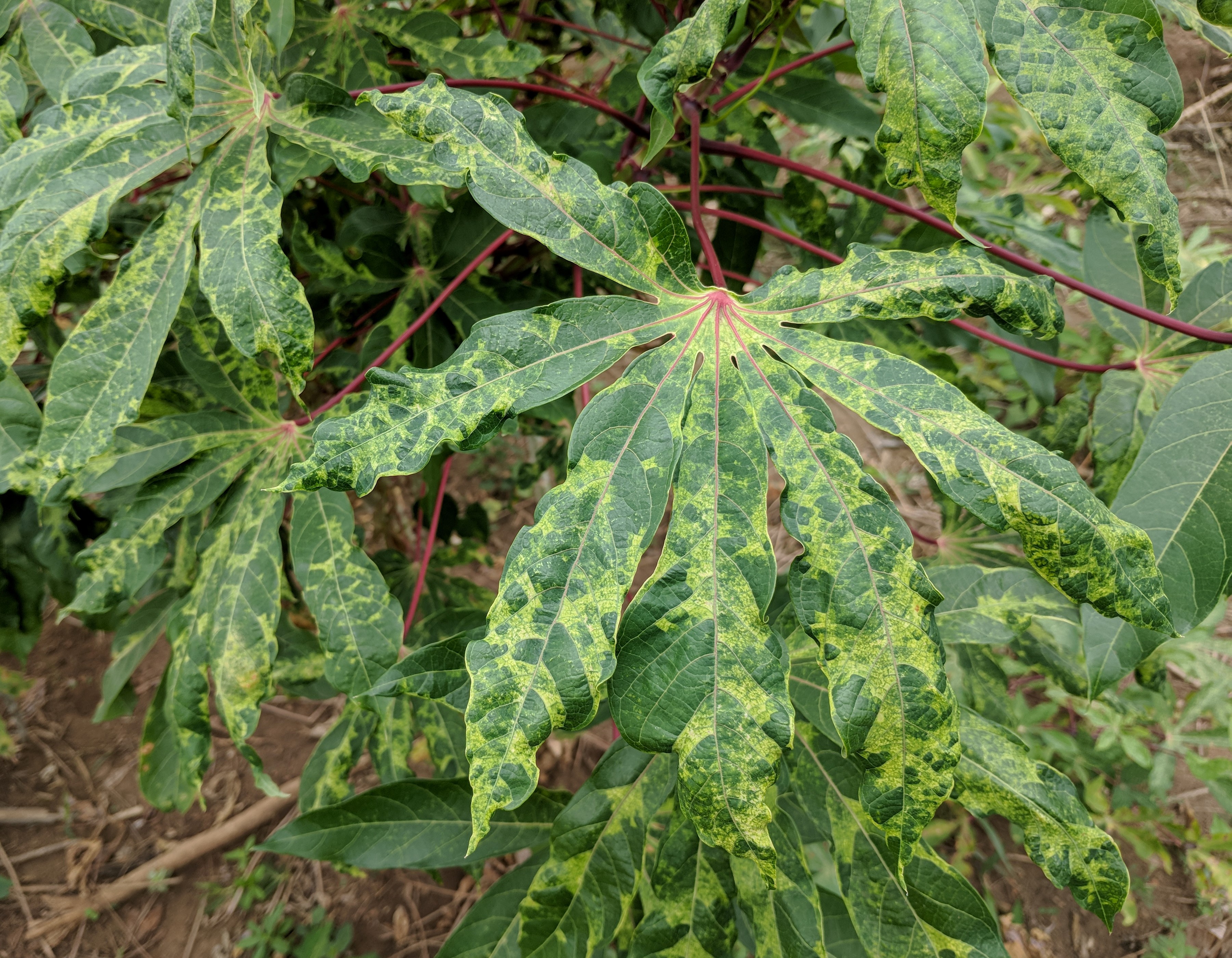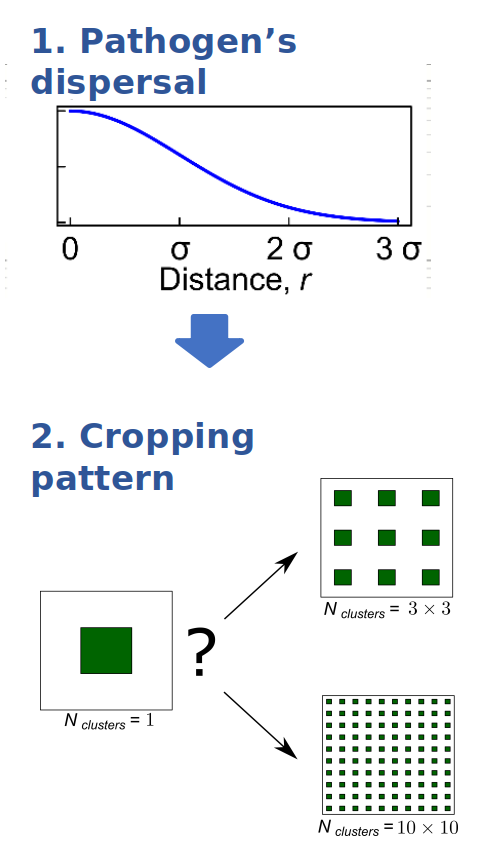Theoretical Vector Dynamics
A New Perspective on insect transmission of cassava pathogens.
Researchers in Epidemiology & Modelling show that
whitefly transmission efficiency of a potentially devastating pathogen of cassava - a staple food-source for millions
across sub-Saharan Africa – is substantially higher than previously thought.
A new approach developed by team members, using model-based Bayesian methods, to analyse access period experiments, is uncovering evidence for the importance of vectors of cassava viruses than previously thought. Access period experiments involve exposure of insect vectors to infected plants for set periods of feeding access.
These widely-used laboratory techniques provide insights into the role of plant-feeders in plant pathogen transmission to determine if they are an important target to control in order to minimise the spread of infections among crops.
Two avenues of virus introduction and a major threat to cassava production
Cassava mosaic begomoviruses are
carried between host plants by Bemisia tabaci whitefly; but are also spread during cassava propagation in stem
infection. Once cassava mosaic disease takes hold large areas of cassava can be destroyed requiring growers to source
fresh cuttings – which may also harbour infection.
Unmasking Virus Retention Period

Past studies had concluded that the duration of B. tabaci retention of CMBs, and infectiousness for cassava plants, remained relatively low, leading to conclusions that whitefly played a secondary role in production area outbreaks. However, Donnelly and Gilligan found that the analysis of seminal access period experiments had not accounted for the survival of whitefly under laboratory conditions. Using Bayesian analyses they demonstrated high whitefly transmission efficiency together with low whitefly survival in the underlying experiments. The analyses point to the need to revisit findings of low transmission efficiency for additional insect-borne plant pathogens.
Project members
- Dr Ruairi Donnelly
- Professor Chris Gilligan
Landscape Dispersal Dynamics
Developing new analytical tools for spatially explicit disease models
We devise models to predict the optimal spacings of susceptible crops (farm and landscape scale) which will suppress the rapid spread of a pathogen.
These models can be useful for developing tools that can assist farmers with making decisions on field size and spatial planting arrangement, when planting-out new fields and where they may wish to integrate control interventions.

For more information contact project members:
- Dr Yevhen Suprunenko
- Professor Chris Gilligan